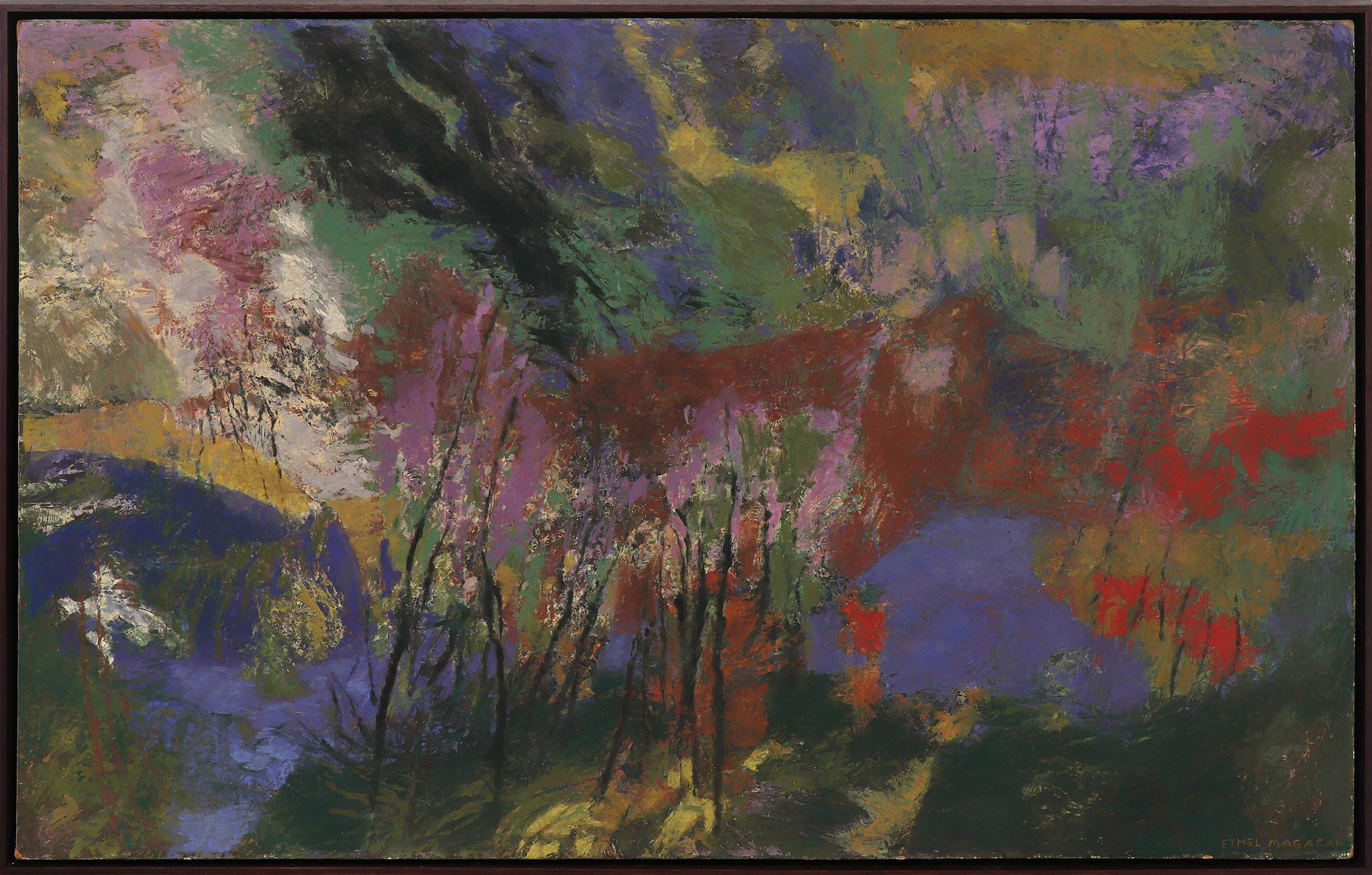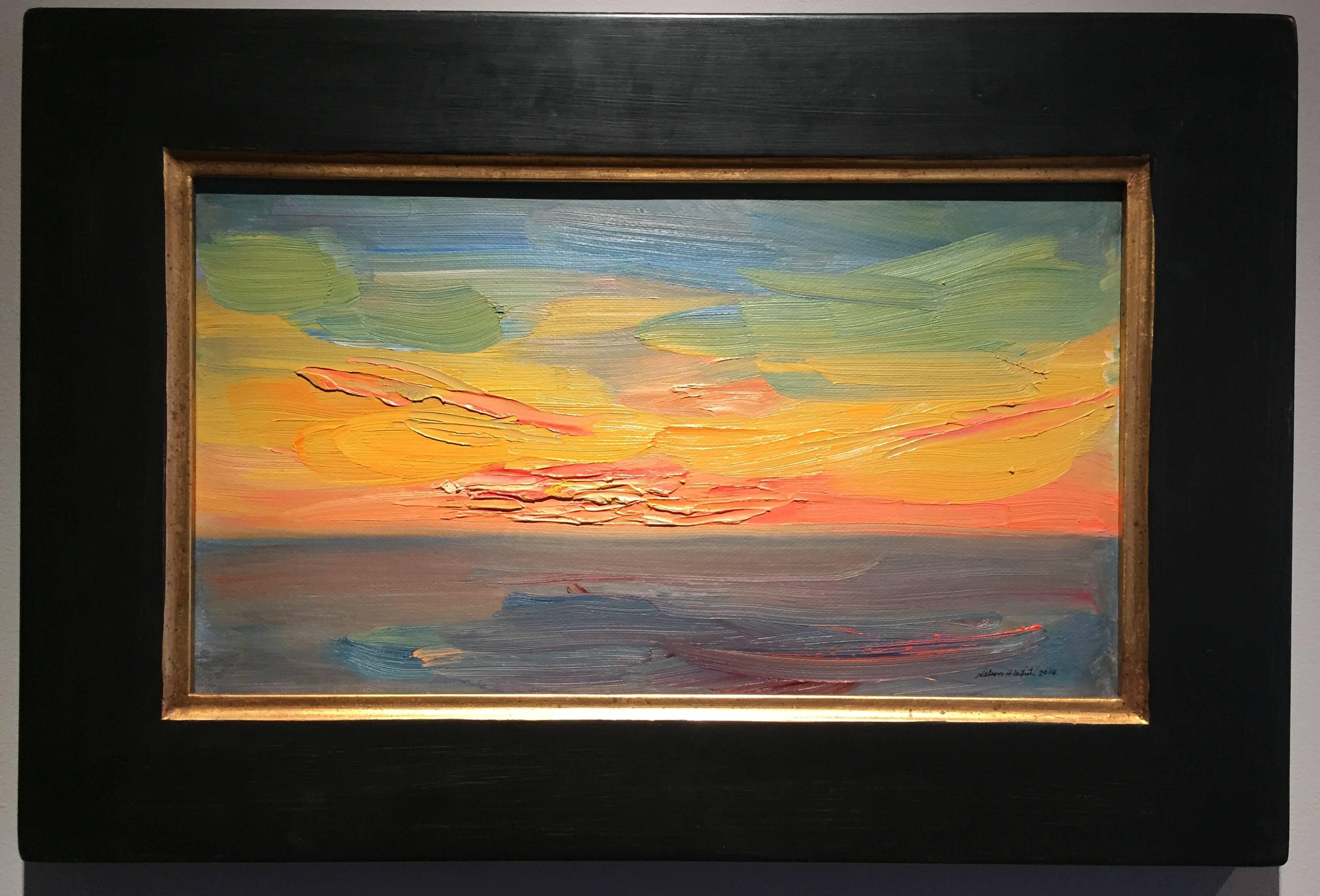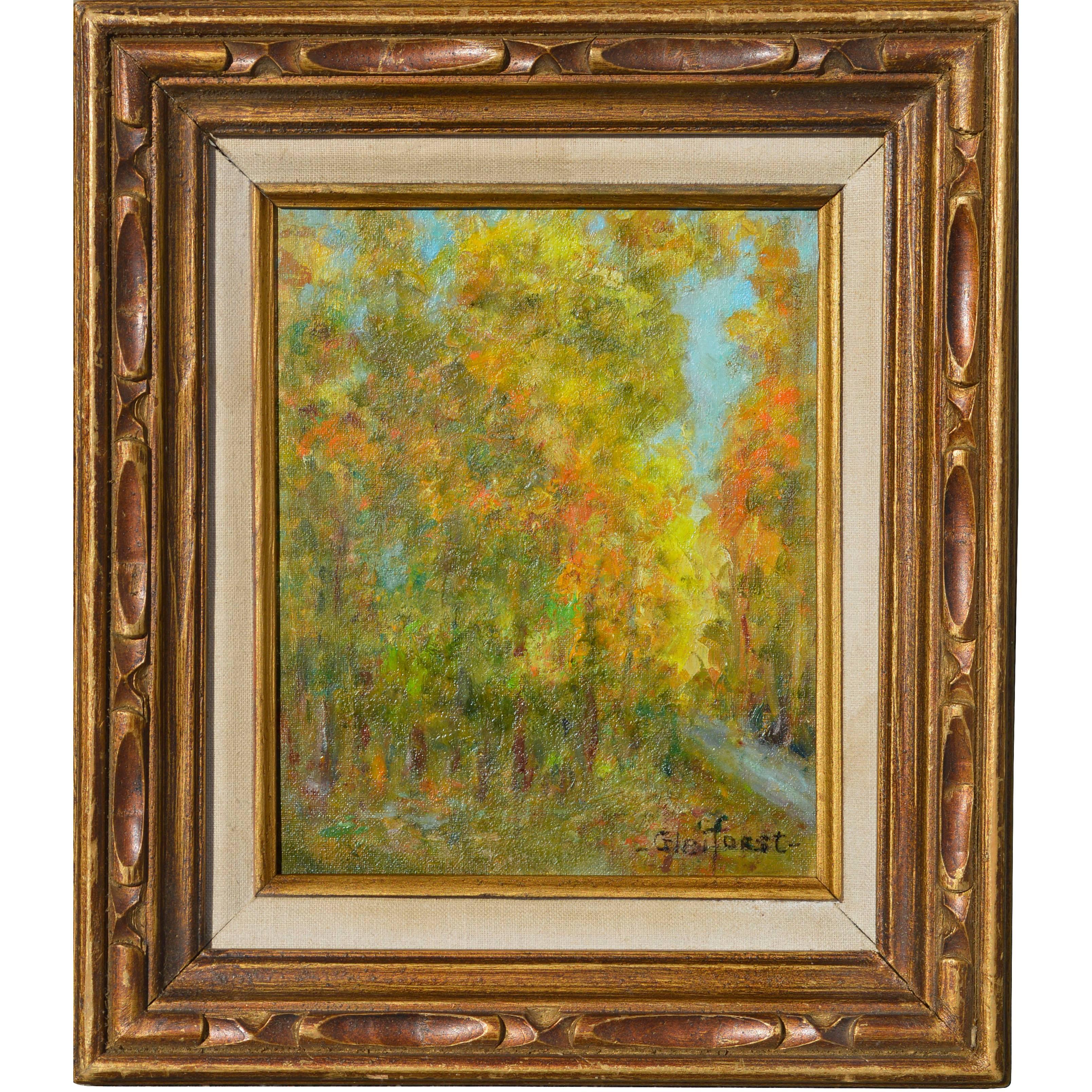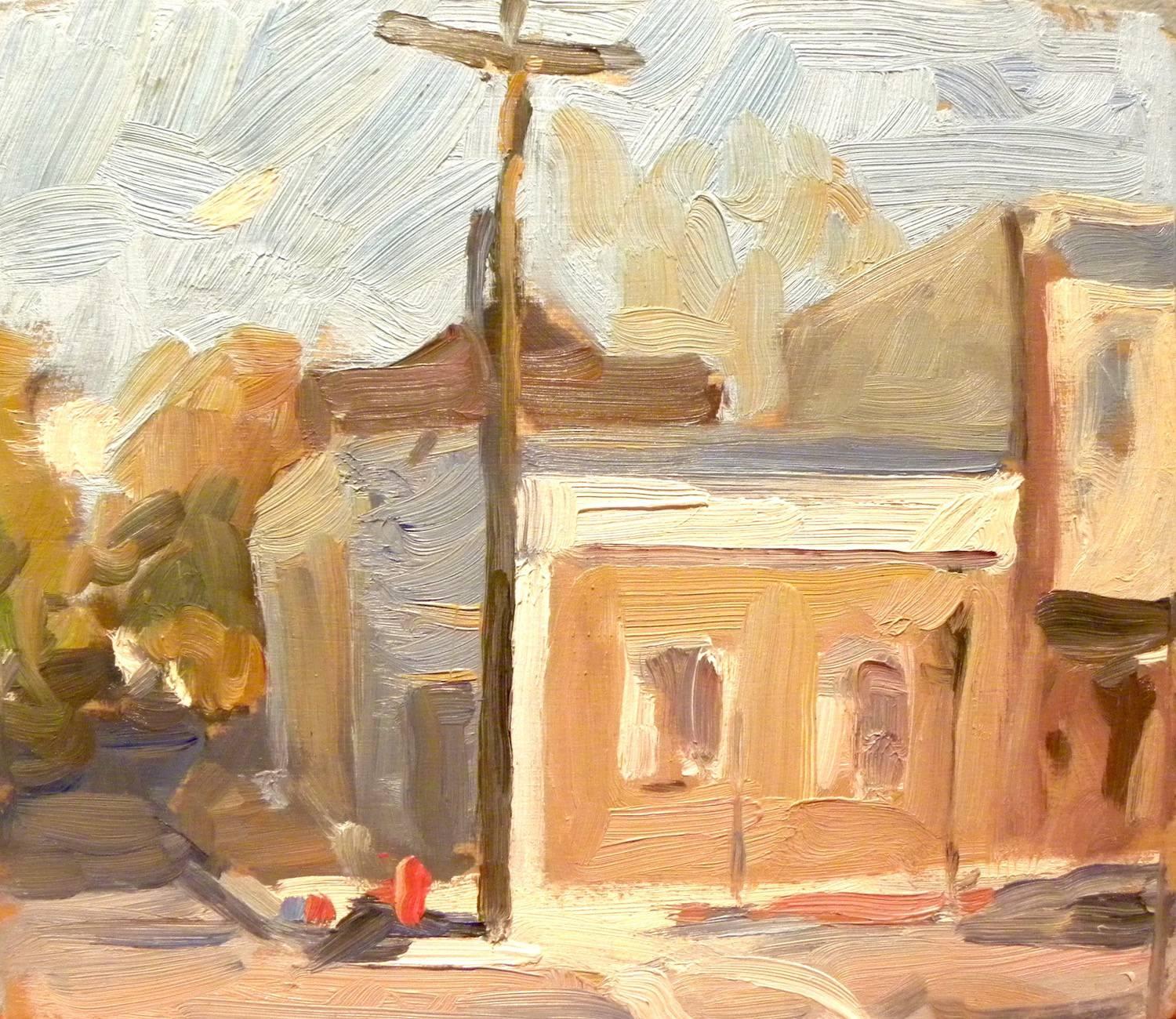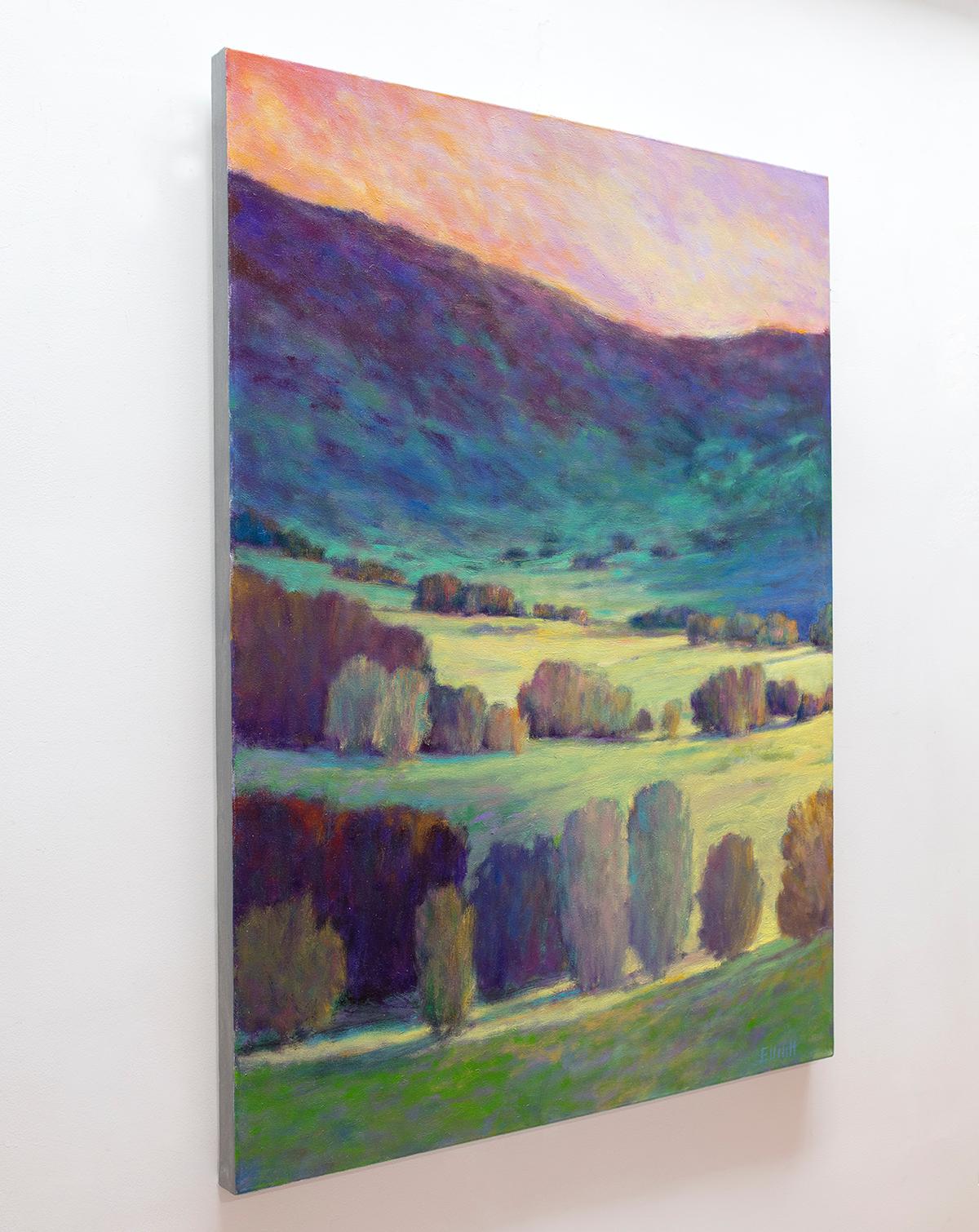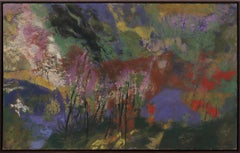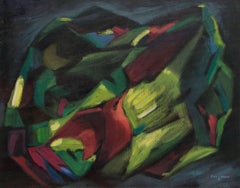
Quiet Water (Landscape with Pond)
View Similar Items
Want more images or videos?
Request additional images or videos from the seller
1 of 11
Ethel MagafanQuiet Water (Landscape with Pond)
About the Item
- Creator:Ethel Magafan (1916-1993, American)
- Dimensions:Height: 28.5 in (72.39 cm)Width: 38.75 in (98.43 cm)Depth: 1.5 in (3.81 cm)
- Medium:
- Movement & Style:
- Period:
- Condition:
- Gallery Location:Denver, CO
- Reference Number:Seller: DCG-245701stDibs: LU2734697132
About the Seller
5.0
Platinum Seller
These expertly vetted sellers are 1stDibs' most experienced sellers and are rated highest by our customers.
Established in 1979
1stDibs seller since 2013
264 sales on 1stDibs
Typical response time: 5 hours
More From This SellerView All
- Springtime, 1960s Semi Abstract Modernist Mountain Landscape Tempera PaintingBy Ethel MagafanLocated in Denver, CO"Springtime" is an original tempera on board painting of a Colorado mountain landscape painting by Ethel Magafan circa 1960. Abstracted mountain landscape with trees, painted in colors of green, purple, golden yellow, red, orange, blue, black and white. Presented in a custom hardwood frame, outer dimensions measure 23 ¼ x 50 x 2 inches. Image size is 30 x 48 inches. Provenance: Private collection, Maine Acquired in the early 1960s, by descent through the family to the present owner About the Artist: Jenne and Ethel Magafan were identical twins, born in Chicago to a Greek immigrant father and a Polish mother. Due to health concerns about their father, the family moved to Colorado, living first in Colorado Springs and then in Denver. He was a proud supporter of their artistic ambitions but died suddenly 1932, a heavy blow to both of them. They attended East High School in Denver, where they found a mentor in their art teacher Helen Perry. She had studied at the Art Institute of Chicago but had later abandoned a career as an artist, making her all the more determined to help the Magafan twins succeed artistically. While still in high school, the twins impressed artist Frank Mechau, and Helen Perry paid for their lessons with him. He subsequently invited them to apprentice with him at his Redstone studio. In 1936, Jenne won the Carter Memorial Art Scholarship and shared it with her sister so that they both could attend the Broadmoor Art Academy in Colorado Springs. Once they ran out of money, Mechau, now teaching there, hired them as assistants. Through their involvement at the Academy, the twins entered into careers as muralists, working at first with Mechau and then with Peppino Mangravite. From 1937 to 1943, Ethel was commissioned to paint her first of seven government sponsored murals. Located in the US Post Office in Auburn, Nebraska, this commission made Ethel (at age 26) the youngest artist in America to receive such an honor. Denver Art Museum director Donald J. Bear once commented that “[Ethel and Jenne's] study of local detail makes them appear as little Bruegels of ranch genre – natural and unforced.” As mural painting commissions diminished, Ethel began to do more easel painting for which she used a palette knife and tempera paints to great effect. After settling in California for five years, the twins permanently relocated to Woodstock, New York in 1945, where the sisters lived apart for the first time. Ethel developed an increasing focus within her work, particularly for horses and abstract landscapes. She met fellow artist Bruce Currie...Category
Mid-20th Century American Impressionist Abstract Paintings
MaterialsTempera, Board
- Pikes Peak, 1940s Colorado Mountain Landscape in Autumn, Tempera PaintingBy Charles Ragland BunnellLocated in Denver, COOriginal vintage 1941 Colorado landscape painting with autumn leaves and Pikes Peak blanketed in snow by Charles Bunnell (1897-1968). Inscribed verso, "To Laura, November 22, 1941", egg tempera on board. Signed by the artist in the lower left corner and titled verso. Presented in a custom frame, outer dimensions measure 15 ½ x 19 ¼ x 1 ¼ inches. Image size is 7 ¾ x 11 inches About the Artist: Artist and teacher, Charles ("Charlie") Bunnell worked in a variety of styles throughout his career because as an artist he believed, "I’ve got to paint a thousand different ways. I don’t paint any one way." At different times he did representational landscapes while concurrently involved with semi- or completely abstract imagery. He was one of a relatively small number of artists in Colorado successfully incorporating into their work the new trends emanating from New York and Europe after World War II. During his lifetime he generally did not attract a great deal of critical attention from museums, critics and academia. However, he personally experienced a highpoint in his career when Katherine Kuh, curator at the Art Institute of Chicago, personally chose one of his paintings - Why? - for its large exhibition of several hundred examples of abstract and surrealist art held in 1947-48, subsequently including it among the fifty pieces selected for a traveling show to ten other American museums. An only child, Bunnell developed his love of art at a young age through frequent drawing and political cartooning. In high school he was interested in baseball and golf and also was the tennis champion for Westport High School in Kansas City. Following graduation, his father moved the family to Denver, Colorado, in 1916 for a better-paying bookkeeping job, before relocating the following year to Colorado Springs to work for local businessman, Edmond C. van Diest, President of the Western Public Service Company and the Colorado Concrete Company. Bunnell would spend almost all of his adult life in Colorado Springs. In 1918 he enlisted in the United States Army, serving in the 62nd Infantry Regiment through the end of World War I. Returning home with a 10% disability, he joined the Zebulon Pike Post No. 1 of the Disabled American Veterans Association and in 1921 used the benefits from his disability to attend a class in commercial art design conducted under a government program in Colorado Springs. The following year he transferred to the Broadmoor Art Academy (founded in 1919) where he studied with William Potter and in 1923 with Birger Sandzén. Sandzén’s influence is reflected in Bunnell’s untitled Colorado landscape (1925) with a bright blue-rose palette. For several years thereafter Bunnell worked independently until returning to the Broadmoor Art Academy to study in 1927-28 with Ernest Lawson, who previously taught at the Kansas City Art Institute where Bunnell himself later taught in the summers of 1929-1930 and in 1940-41. Lawson, a landscapist and colorist, was known for his early twentieth-century connection with "The Eight" in New York, a group of forward-looking painters including Robert Henri and John Sloan whose subject matter combined a modernist style with urban-based realism. Bunnell, who won first-place awards in Lawson’s landscapes classes at the Academy, was promoted to his assistant instructor for the figure classes in the 1928-29 winter term. Lawson, who painted in what New York critic James Huneker termed a "crushed jewel" technique, enjoyed additional recognition as a member of the Committee on Foreign Exhibits that helped organize the landmark New York Armory Exhibition in 1913 in which Lawson showed and which introduced European avant-garde art to the American public. As noted in his 1964 interview for the Archives of American Art in Washington, DC, Bunnell learned the most about his teacher’s use of color by talking with him about it over Scotch as his assistant instructor. "Believe me," Bunnell later said, "[Ernie] knew color, one of the few Americans that did." His association with Lawson resulted in local scenes of Pikes Peak, Eleven Mile Canyon, the Gold Cycle Mine near Colorado City and other similar sites, employing built up pigments that allowed the surfaces of his canvases to shimmer with color and light. (Eleven Mile Canyon was shown in the annual juried show at the Carnegie Institute in Pittsburgh in 1928, an early recognition of his talent outside of Colorado.) At the same time, he animated his scenes of Colorado Springs locales by defining the image shapes with color and line as demonstrated in Contrasts (1929). Included in the Midwestern Artists’ Exhibition in Kansas City in 1929, it earned him the gold medal of the Kansas City Art Institute, auguring his career as a professional artist. In the 1930s Bunnell used the oil, watercolor and lithography media to create a mini-genre of Colorado’s old mining towns and mills, subject matter spurned by many local artists at the time in favor of grand mountain scenery. In contrast to his earlier images, these newer ones - both daytime and nocturnal -- such as Blue Bird Mine essentially are form studies. The conical, square and rectangular shapes of the buildings and other structures are placed in the stark, undulating terrain of the mountains and valleys devoid of any vegetation or human presence. In the mid-1930s he also used the same approach in his monochromatic lithographs titled Evolution, Late Evening, K.C. (Kansas City) and The Mill, continuing it into the next decade with his oil painting, Pikes Peak (1942). During the early 1930s he studied for a time with Boardman Robinson, director of the Broadmoor Art Academy and its successor institution, the Colorado Springs Fine Arts Center from 1930 to 1947. In 1934 Robinson gave him the mural commission under the Public Works of Art Project (PWAP) for West Junior High School in Colorado Springs, his first involvement in one of several New Deal art...Category
1930s American Impressionist Landscape Paintings
MaterialsEgg Tempera, Board
- Abstract Colorado Mountain Landscap, Modernist Painting Green Pink BlueBy Zona WheelerLocated in Denver, COOriginal 1949 mid-century modern semi-abstract painting of Colorado Mountains by Kansas woman artist, Zona Wheeler (1913-1998) with shades of gree...Category
Mid-20th Century Abstract Abstract Paintings
MaterialsOil
- Southwestern Landscape Painting, Lightning Storm over Mountains, Semi AbstractLocated in Denver, COOriginal vintage painting of a Lightning Storm, Southwestern Mountain Landcape. Oil painting on textured board by Morton Lawrence Schneider (1919-2000). This large scale semi abstrac...Category
20th Century American Modern Landscape Paintings
MaterialsOil, Board
- Old Mine and Houses, Cortez Colorado, Modernist Abstract Landscape WatercolorBy Richard AyerLocated in Denver, CO20th century modernist watercolor painting depicting an old mine and houses in Cortez, Colorado by Richard K. Ayers with colors of blue, green, gold, and brown. Presented in a custom frame with all archival materials, outer dimensions measure 36 ½ x 30 ½ x ¾ inches. Image size is 24 ¾ x 18 ¾ inches. Painting is clean and in very good vintage condition. About the Artist: Richard K. Ayers (1921-2003) studied art at Miami University...Category
20th Century American Modern Abstract Paintings
MaterialsWatercolor
- Ed Sketching at Red Rocks, Vintage 1940s Original Mountain Landscape, ColoradoBy Vance KirklandLocated in Denver, COOriginal vintage 1940s Modernist Landscape painting of Red Rocks Park, Colorado by Vance Kirkland (1904-1981). Titled, "Ed (Hicks) Sketching at Red Rocks". This regionalist mountain landscape painting is set near Red Rocks Park, Morrison, Colorado (just west of Denver). The figure in the painting is of Kirkland's friend, Ed Hicks. Watercolor on paper, signed and dated, January 1943, lower left and titled verso by the artist. Painted in colors of red, brown, blue, and green. Presented in a custom gold leaf frame, outer dimensions measure 34 ¾ x 42 ⅞ x 1 ¼ inches. Painting as shown within the mat and frame measures 21 x 29 inches. Provenance: Private Collection, Denver, Colorado About the Artist: Variously referred to as the “Father of Modern Colorado Painting,” “Dean of Colorado Artists” and “Colorado’s pre-eminent artist,” Kirkland was an inventive, visionary painter who spent fifty-two years of his fifty-four year career in Denver. Of the approximately 1,200 paintings he created, about 550 from the first half of his career (1927-1953) are water-based media: acquarelle, gouache, casein and egg tempera, with a few oils. In the latter half of his career (1953-1981) he used oil and his unique oil and water mixture. He also produced five hundred drawings and some ten prints, mostly lithographs on stone, while also engaged in teaching full-time for most of the period. To show people “something they have never seen before and new ways to look at things,” he felt he needed to preserve his artistic freedom. Consequently, he chose to spend his entire professional career in Denver far removed from the established American art centers in the East and Midwest. “By minding my own business and working on my own,” he said, “I think it was possible to develop in this part of the country… I’ve developed my kind of work [and] I think my paintings are stronger for having worked that way.” The geographical isolation resulting from his choice to stay in Colorado did not impede his creativity, as it did other artists, but in fact contributed to his unique vision. The son of a dentist, who was disappointed with his [son’s] choice of art as a career, Kirkland flunked freshman watercolor class in 1924 at the Cleveland School of Art (now the Cleveland Institute of Art) for putting colors into his landscapes that did not exist in nature and for competing colors. Not dissuaded, he won first prize for his watercolors in his junior and senior years. [While in Cleveland,] he studied with three influential teachers. Henry Keller, included in the prestigious New York Armory Show in 1913, introduced him to designed realism which he later used in his Colorado landscapes in the 1930s and 1940s. His other teachers were Bill Eastman, who studied with Hans Hofmann and appreciated all the new movements in modern art, and Frank Wilcox, a fine watercolorist. While a student at the Cleveland School of Art, Kirkland concurrently took liberal arts courses at Western Reserve and the Cleveland School of Education and taught two freshman courses in watercolor and design, receiving his diploma in painting from the school in 1927 by doing four years of work in three. The following year he received a Bachelor of Education in Art degree from the same institution. In 1929 he assumed the position of founding director of the University of Denver’s School of Art, originally known as the Chappell School of Art. He resigned three years later when the university reneged on its agreement to grant its art courses full recognition toward a Bachelor of Arts degree. His students prevailed on him to continue teaching, resulting in the Kirkland School of Art which he opened in 1932 at 1311 Pearl Street in Denver. The building, where he painted until his death in 1981, formerly was the studio of British-born artist, Henry Read, designer of the City of Denver Seal and one of the original thirteen charter members of the Artists’ Club of Denver, forerunner of the Denver Art Museum. The Kirkland School of Art prospered for the next fourteen years with its courses accredited by the University of Colorado Extension Center in Denver. The teaching income from his art school and his painting commissions helped him survive the Great Depression. The U.S. Treasury Department’s Section of Fine Arts commissioned from him two post office murals, Cattle Roundup (1938, Eureka, Kansas), and Land Rush (1940, Sayre, Oklahoma). He also did murals for several Denver clients: the Gerald Hughes mansion (1936, later demolished), Arthur Johnson home (1936-37, Seven Drinks of Man), Albany Hotel (1937, later demolished), Neustetter’s Department Store (1937, “History of Costume,” three of five saved in 1987 before the building interior was demolished in advance of its condo conversion), and the Denver Country Club (1945, partially destroyed and later painted over). In 1953 the Ford Times, published by the Ford Motor Company, commissioned Kirkland along with fellow Denver artists, William Sanderson and Richard Sorby, to paint six watercolors each for the publication. Their work appeared in articles [about] Colorado entitled, “Take to the High Road” (of the Colorado Rockies) by Alicita and Warren Hamilton. Kirkland sketched the mountain passes and high roads in the area of Mount Evans, Independence Pass near Aspen, and Trail Ridge Road in Rocky Mountain National Park. In 1946 Kirkland closed his art school when the University of Denver rehired him as director of its School of Art and chairman of the Division of Arts and Humanities. In 1957...Category
1940s American Modern Landscape Paintings
MaterialsWatercolor
$15,400 Sale Price20% Off
You May Also Like
- Evening West Neck CreekBy Nelson H. WhiteLocated in Sag Harbor, NYA small, horizontally oriented landscape painting by Nelson White. Painted en plein air on Shelter Island, where his family has owned property for generations. Situated in his back y...Category
21st Century and Contemporary American Impressionist Landscape Paintings
MaterialsOil, Wood Panel
- View from Lido Di CamarireBy Nelson H. WhiteLocated in Sag Harbor, NYPainted en plein-air in Italy, Nelson depicts a beach, sanding in the foreground, and then diagonally runs a shoreline, The horizon is met by a dark, mountainous, landform, and sits ...Category
21st Century and Contemporary American Impressionist Landscape Paintings
MaterialsOil, Panel
- "Tuscan Poppy Field" 2010 oil painting by contemporary American impressionistBy Nelson H. WhiteLocated in Sag Harbor, NYPainted en plein-air in Italy; A Tuscan farmhouse meets a line of green shrubbery on the horizon. Red gobs of paint are laid on thick, amidst harsh strokes of indigo shadows in the f...Category
21st Century and Contemporary American Impressionist Landscape Paintings
MaterialsOil, Panel
- "Sunset, Waterford" oil painting by american impressionist, colorful abstractionBy Nelson H. WhiteLocated in Sag Harbor, NYAn abstract depiction of a seascape during sunset. Painted from life in Waterford, Connecticut. Framed in a traditional black frame with gold inner trim (See pictures). Nelson H. Wh...Category
21st Century and Contemporary American Impressionist Landscape Paintings
MaterialsPanel, Oil
- "Sunset Sea Sky" 2002 impressionist plein air painting Bahamas, soft tonesBy Nelson H. WhiteLocated in Sag Harbor, NYAn abstract linear painting is actually a plein-air seascape of a sunset peaking through clouds. A soft sandy shoreline is greeted by crashing...Category
21st Century and Contemporary American Impressionist Landscape Paintings
MaterialsPanel, Oil
- Mid Century Autumn Trees LandscapeBy Helen Enoch GleiforstLocated in Soquel, CAVivid mid century landscape of autumn trees blurring into colorful abstraction by Helen Gleiforst (American, 1903-1997). Presented in a giltwood frame. Image size: 10" H X 8" W. G...Category
1950s American Impressionist Landscape Paintings
MaterialsMasonite, Oil
$880 Sale Price20% Off
Recently Viewed
View AllMore Ways To Browse
New Orleans Vintage Posters
New Orleans Vintage Poster
Tiffany Co Locations
Tiffany And Co Locations
Notre Dame De Paris Painting 1950s
Polish Travel Poster
Vintage 1940s Summer Dress Dresses
Tiffany And Co Man
Vintage Mirror Ball
Barbara Barbara Vintage Dress
Tiffany Horse
Vintage Poster California
20s Fashion Sketch
Vintage Art Supplies 1940s
Norman Irving
Fred Jones
Blue Obelisks
Henry V Painting
